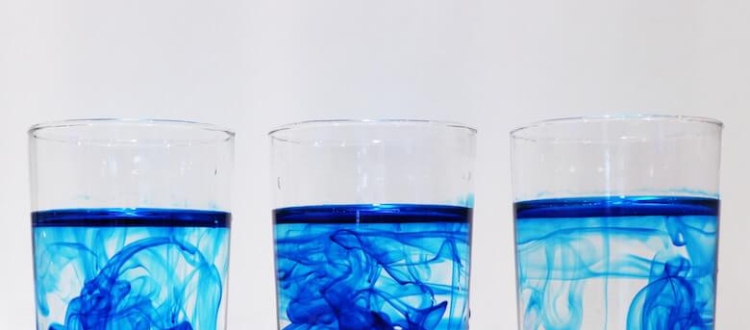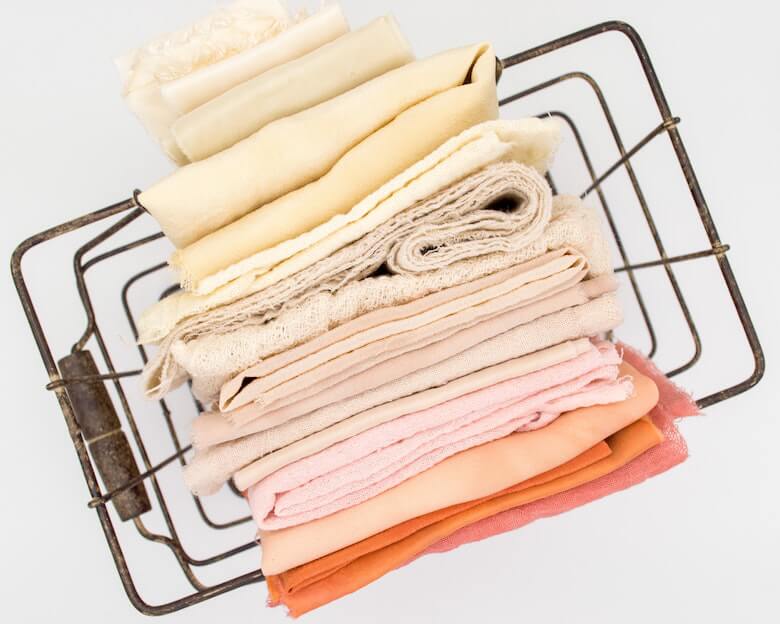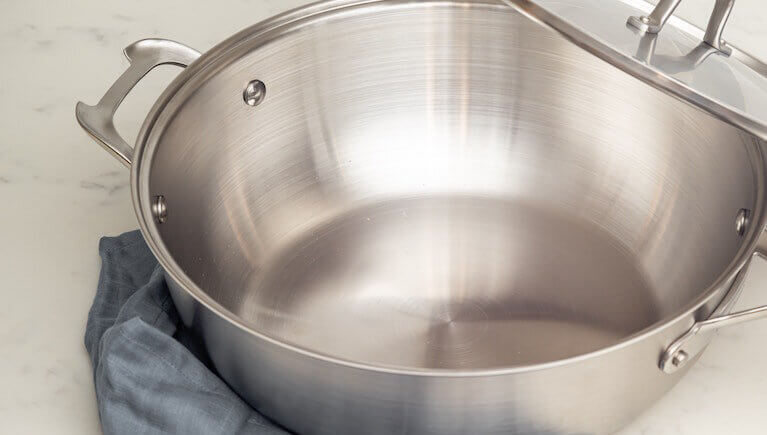
How to Dye Linen
How to dye linen fabric
Have you got an item of clothing that needs a new lease of life? Perhaps you've got a tired linen duvet cover that could do with a refresh. Instead of buying a new color-popping blouse, you could turn one of your existing white shirts into something different. Remember those vintage linens you never got round to using because they're the wrong shade? And maybe you've sourced the perfect linen dress but the color just isn't working for you. It might be time to reach for the dye.
Whether you're reinventing or reinvigorating, dyeing textiles at home is a fun and cost-effective way of switching up your wardrobe or linen cupboard. It's the ideal way to finish your home craft projects too. Linen takes dye really well, making it perfect for a revamp project. If you like the exciting alchemy of home dyeing or have never dyed fabrics yourself before, here are some simple tips on how to dye linen and get the best results.

An easy fabric home-dyeing process
Before we begin, remember these instructions are for dyeing natural linens, not other types of fabrics like rayon, cotton, silk, polyester, wool or nylon. The synthetic fabric and cotton-linen mix garment dyeing process may differ. Certain dyes are suitable for specific fabric, so check the dye packet before buying. Fabrics in dark colors will not take light dyes, and you may need to bleach the garment first. This treatment can damage many types of fabric and reduce their life span, so we recommend just choosing an appropriate dye for the original color. If you want to dye a white or light colored fabric a darker shade, this is much easier. Once you've chosen the perfect color and you're sure you've got the right dye, you can get started.
So, here's how to dye your linens a fabulous new color, hassle-free.

Step 1.
Weigh the linen garment so you know how much dye you'll need. Your dye product will tell you exactly how much to use, but as a rough guide 4oz of dye will color 1lb of dry fabric (equivalent to about two adult t-shirts). If you want a lighter color result, use less dye.
Step 2.
Wash the item or fabric in mild detergent if it's new, or dunk in water until wet. This prepares the fabric fibers for the dyeing process. We recommend using eco-friendly detergent and warm or cool water for washing linen fabric.
Step 3.
Protect the surfaces around where you'll be working with old sheets or towels, or an old plastic tablecloth. You don't want to splash dye all over your kitchen counter or floor! Wearing an apron will protect your clothing, and if you have sensitive skin we advise using rubber gloves when working with dye.
Step 4.
Choose the best dyeing method for you. This will depend on your home set-up and whether you have a suitable stainless steel pan and space to stir and simmer the dye solution. Modern washing machines are ideal for home dyeing.

Hot water dye bath method
Fill a stainless steel pan or large bucket half full with boiling water. You need a big enough pot for the fabric to be able to move freely in the hot water. Wearing rubber gloves, add the appropriate dose of fibre reactive dye plus 1/4 cup salt per gallon of water used. Mix well. Plunge the wet garment carefully into the hot water solution and stir continuously for between 5 - 60 minutes, depending on the density of color you're looking for. When the item is just darker than the desired end color, remove from the pot.
Stove-top dyeing method
Wearing rubber gloves, fill a large stainless steel pot with enough water to comfortably cover the garment, and bring to just below boiling point. Add 1/4 cup salt per gallon of hot water used, and mix in the correct amount of your chosen dye. Place the wet linen item into the pot, reduce the stove heat to a gentle simmer and stir for 10 minutes. Then, every 5 minutes, carefully lift the fabric out of the warm water to see if the color has developed to the desired shade – the longer it stays in the solution, the more vibrant the color.
Washing machine method
This is the easiest and least messy home dyeing method, but it gives you less control over the final color result. Simply place a dye pod in your washing machine, add the linen fabric or you're dyeing and run a warm water 30 degree cycle for 20 minutes. Re-wash in a mild detergent and cool water, and you're done. Skip steps 5 and 6.
Step 5.
Remove the fabric from the dye bath or washing machine and rinse under cool water until the water runs clear and no more dye comes away. You can also use the rinse cycle on your washing machine.
Step 6.
Wash on a cold water cycle with a gentle detergent and dry. Wash separately for the next few washes just in case the dye hasn't properly fixed to the fiber and needs more of a rinse.

Whilst dyeing linen at home is fun and a cheap, sustainable way to liven up your clothes or home textiles, it isn't without risk. Even if you follow our tips, be aware that the color may come out differently than you'd expected, even though natural linen takes dye well. Any synthetic fibres in the garment, like stitching or logos, and patterns may end up a slightly different color. Man-made fiber and fabrics take dyes in varying ways, and the base colour of even a linen item can affect the end result. As with many DIY projects, there's always an element of crossing your fingers and hoping for the best!
Why dye?
In our experience, dyeing is so much fun that you might find yourself wanting to change everything in sight into some exciting new color! It makes sense to do multiple items at the same time if this works with the amount of dye you've got, and with the equipment to hand. Dig out those old tea towels that have got stained, and give them a new lease of life! If you're bored with plain white bedsheets, why not create a whole new look for your bedroom with some moody greens or summery pastels? There is so much scope to change up your wardrobe or interior decor, with very little work or expense.
Dye products come in liquid or powder form. You can find non-toxic, natural fabric dyes and even make your own from food and plants you'll find around the home. For example, onion skins produce a yellow dye, avocado skin and seed makes a pale pink color, red clover creates a gold tone and red cabbage will turn fabrics bluet-purple. Home dyed items are cheap, practical and reduce waste by remaining in use for longer– you could save up to 12kg of CO2 by up cycling your clothes instead of throwing them away. What's not to love?
If dyeing feels like too much work, you can always browse our extensive collection of linen fabrics. Because we stock such a wide range of colors you may find exactly the right one for you, without needing to resort to buying dye. All our fabrics are pure, European linen, making them a sustainable choice thanks to their natural biodegradability and the fact that fewer resources are used in the production process. Whether you're looking for fabric to reupholster a sofa or chair, or create some new curtains, we've got everything from minimalist neutrals to bold, rich colors. You can order a swatch first, to make sure the color matches your other furnishings or fits with your clothes palette. Our linen fabrics are all machine washable and can be tumble dried, but if you're dyeing linen from elsewhere you should check the care instructions before using dye on them.
Read this post for tips on creating a capsule wardrobe from a careful edit of your clothes, or discover the fascinating ways people cleaned linen in the past here.
For more linen care tips visit Houserituals.
